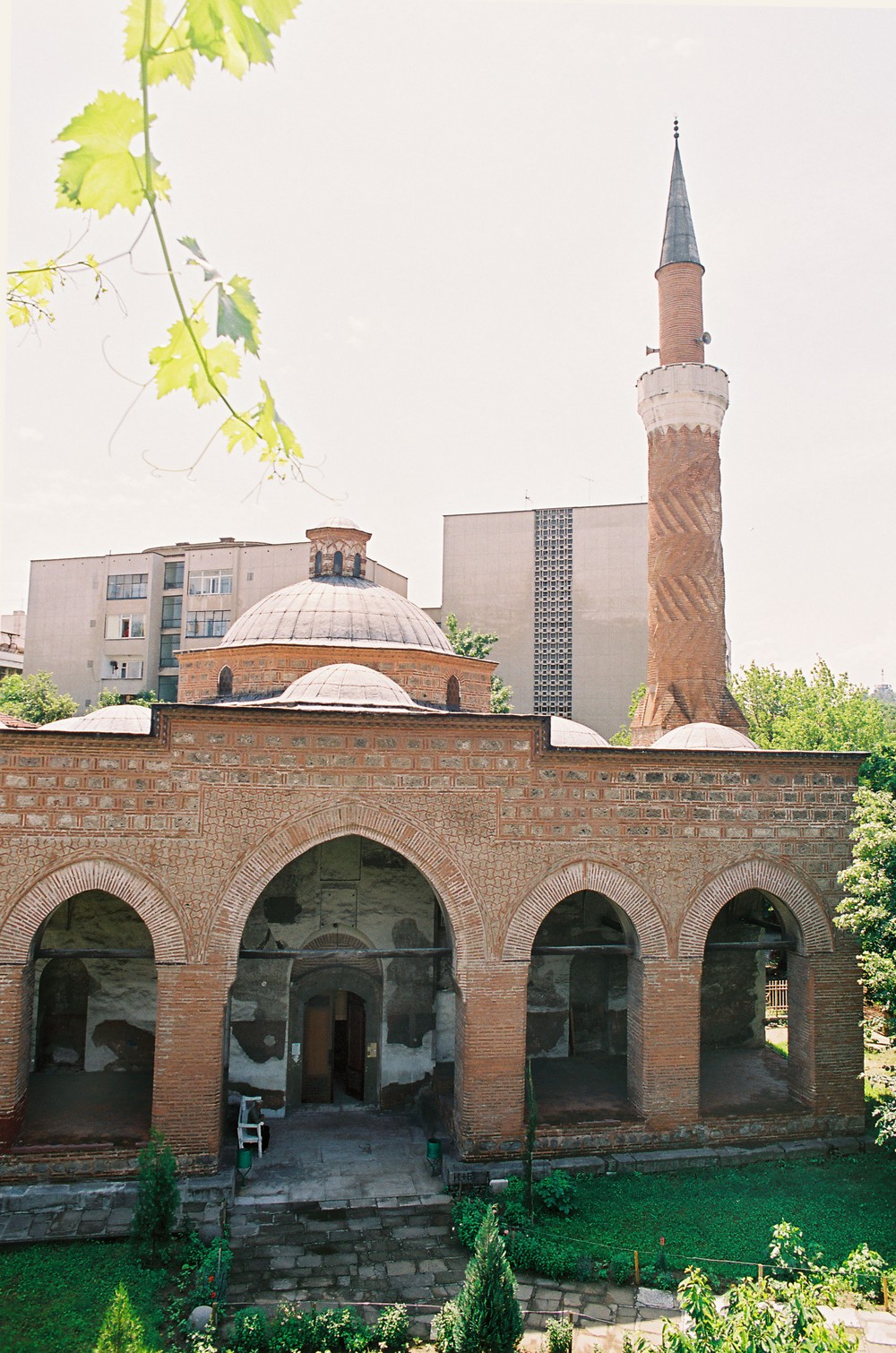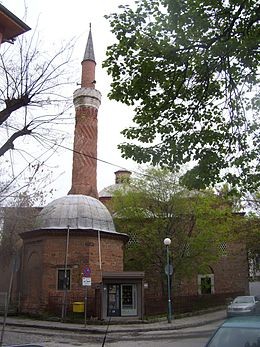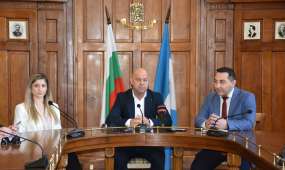Imaret Mosque
Imaret Mosque
Shahbeddin Imarethane Mosque is located in the central part of the city, very close to the pedestrian bridge over the Maritsa River.
Its architecture is typical for this type of building – unplastered red brick. The mosque was built in 1444 – 1445 year by Rumelian Beylerbey (Governor) Shahbeddin Pasha, son of the conqueror of Thrace, Lala Shahin Pasha. А local legend has it that there was a Christian temple on that site before. Proof of this is the cell construction, reminiscent in some parts of the characteristic construction of the Second Bulgarian Empire. The mosque has an open lobby for its entire length with five pointed arches. The central nave is square, with a dome, carried by an eight-wall drum. Part of the naves is of the rowing type and the rest are single-mast sailing-boat. The drawings also show fish, dolphins, sharks, exotic animals, warriors, and bloody combats. The smaller lateral naves are also square. The minaret has a meander brick dressing and is considered an architectural masterpiece. Since the 17th century, the interior walls of the mosque have been frequently decorated with frescoes, some fragments from which have been preserved. In the courtyard of the mosque there is a Turbe (tomb), in which Lala Shahin Pasha (or Shahbeddin Pasha) is buried.
Together with the mosque and the tomb, Shahbeddin erected also an inn, an imaret (kitchen for poor people), a hammam (bath), a mekteb and a madrassa (schools). In 1879-1885, the Eastern Rumelian Regional Assembly was sitting in the building of the Bath. It was demolished in 1931 and in its place today is the building of Zograph Monastery.
The waqf founded by Shahbeddin supported itself with the rent of a large number of houses and shops in Edirne and Malgara, with the taxes of five Turkish villages near Malgara and of the villages of Kuklen, Voden (now quarter of Asenovgrad), Mavrovo and Novo Selo, as well as with two large rice paddies.
Images of 58 different vessels are recorded in the temple. In the ‘60s of XX century the building was renovated by the National Institute for Monuments of Culture. As of 1992 it is again an operating house of prayers.
The mosque owes its name to the imaret that was connected to it. Over the course of more than four centuries “every day hot meals and bread were handed out there for the poor people, regardless of their faith”.













Add new comment